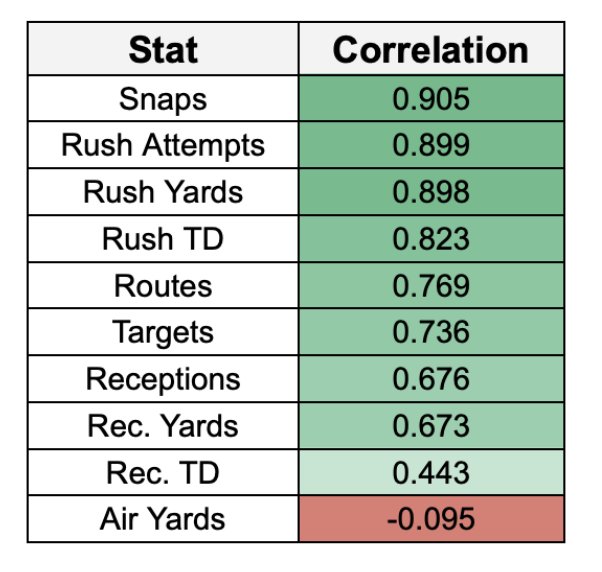Evaluating a running back's value requires moving beyond surface statistics to analyze both efficiency metrics and situational impact. Starter stats typically include high-volume outputs like total rushing yards, touchdowns, and carries, reflecting durability and offensive reliance. Alt rushing yards, often tied to backups or committee runners, emphasize per-attack efficiency—measured by yards per carry (YPC) or success rates in short-yardage scenarios.
Assessing Starter Value
Primary runners contribute consistently through volume, offering high-floor production crucial for offensive stability. Key indicators like fantasy football points or win probability added (WPA) quantify their role in driving team wins. However, inflated stats from weak defenses may obscure efficiency dips, necessitating advanced metrics such as PFF grades or DVOA adjustments to isolate true value.
Evaluating Alt Runner Efficiency
Backups shine in efficiency contexts, showcasing high YPC or explosive play rates that leverage limited touches for outsized gains. This targets specific gaps, such as red-zone dominance or scheme adaptability, measured by metrics like DVOA situational splits. Yet, low-volume output risks statistical noise; a 6.0 YPC on 50 carries may not scale sustainably against starters' 1,000-yard seasons.

Comparative Metrics for Objective Value
To resolve the debate, integrated data analysis is essential:
- Value Over Replacement (VORP): Quantifies a starter's incremental win contribution above a baseline backup, prioritizing reliable impact.
- Efficiency-Adjusted Models: Combine YPC with workload (e.g., Pro Football Focus' run grades) to identify undervalued alts in high-leverage downs.
- Situational Success Rates: Examines performance in key moments, revealing starters' consistency versus alts' role-specific spikes.
Empirical evidence typically favors starters; their volume-driven production translates to sustained team success, while alt runners offer niche utility without comparable long-term value. Prioritize starters in roster decisions, using alt efficiency as a complementary trait for situational strategy.








